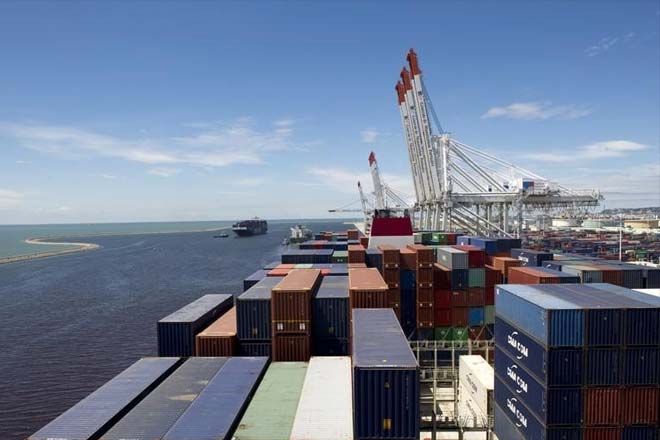
In order to generate fiscal revenue, there is a preference to raise customs duties by imposing an additional duty on imported goods. It is believed that this will tackle the widening trade deficit. However, such measures are rarely effective.
Higher import tariffs are usually imposed on several items considered luxury goods such as expensive mobile phones, cheese and automobiles. Furthermore, goods that were previously imported duty-free now face import tariffs under the new tariff regime. For example, live animals, fish, eggs, motorcycles and bicycles are also included in the list of products facing positive tariff rates.
Additionally, the import tariffs on goods are raised under the guise of countervailing duties and anti-dumping duties in order to protect domestic industries even when such measures have historically been ineffective. Unfortunately, such measures fail to differentiate between necessary and luxury goods. According to a summary released by the Pakistan Bureau of Statistics (PBS) in November 2018, the month-on-month increase in imports in October 2018 was 9.28% while the year-on-year decrease in imports was 1%.
On the other hand, the month-on-month increase in exports was 10.15% and the year-on-year rise was 1.17%. Although the trade deficit decreased year-on-year by 2.36%, it increased month-on-month by 8.72%.
Moreover, the exports in the first four months of FY19 (July to October) increased 3.48% over the same period in FY18 while imports decreased 0.10%. The overall decrease in the trade deficit was 2.20% in FY19 over the same period in FY18.
In essence, the imports have decreased negligibly. Although the trade deficit at the end of FY19 may decline if exports continue to rise, the imposition of new customs duties as well as additional customs duties may create distortions in the market, which will eventually lead to a wedge between domestic and international prices. This wedge breeds inefficiencies.
It is important to mention that the above data has been reported in dollar terms. Due to the recent depreciation of the rupee, there is a greater increase in rupee valuation of imports, exports and trade deficit over the previous fiscal year.
Commodity-wise data
Imports of the food group, machinery group, transport group, textile group and miscellaneous group decreased in October 2018 over October 2017. On the other hand, the imports of petroleum group, agricultural group (including inputs such as fertilisers) and metal group increased in October 2018.
The most notable decline was in the power generating machinery as its import decreased more than 60%, equivalent to $130 million. On the other hand, the imports of crude oil and LNG increased more than 37% and 85% respectively, a combined increase of more than $250 million in monetary terms.
In addition to this, in the first four months of FY19, the imports of power generating machinery decreased by almost $500 million over the same period in FY18. On the other hand, the imports of LNG increased by more than $650 million.
Therefore, the petroleum group is regaining its share in the import composition of Pakistan as the scope of CPEC-related power projects shift from investment to day-to-day operations requiring imported fuel such as LNG.
However, it is unlikely that the increase in tariffs has created this realignment as both the commodity groups are unlikely to be affected by the tariff measures. On the other hand, if the government successfully prioritises industrial development, we may expect an increase in the import of industrial machinery.
Although there has been a decline of more than 50% in the import of dry fruits and completely built units of transportation vehicles, their total decline is slightly more than $150 million.
The repercussions of tariff measures and other import restrictions are evident in higher prices of domestically produced varieties. The fall in trade value may also indicate an increase in informal trade.
Even though the primary reason for higher prices has been the depreciation of the rupee, higher tariffs provide greater leverage to domestic producers to increase their prices and pass the burden of higher input costs on to customers. Local manufacturers of automobiles have increased their prices by approximately 20% since December 2017.
In order to reduce the trade deficit, policymakers must direct their focus to an export-led growth. Although the total increase in textile products has been negligible at 0.41% for the first four months in FY19, exports of knitwear increased 10.41%. Exports of readymade garments in October 2018 increased 7.62% over October 2017. However, on the other hand, there had been a significant decline in the export of raw cotton and cotton yarn in the first four months of FY19 over the same period in FY18.
With an increase in energy availability, greater liquidity for exporters through incentive payments and depreciation of the rupee, the downstream textile industry has regained its export competitiveness.
However, to maintain the level of growth, it may be necessary for the policymakers to relax import constraints on raw material and intermediate goods that hamper competitiveness of the downstream producers.
In summary, the fall in imports is attributed to the change in import composition. Furthermore, import restrictions, such as tariffs, are likely to breed inefficiencies in domestic industries.
Lastly, the focus must be on export-led growth and ensuring availability of raw material and intermediate goods to domestic producers. Investments, both foreign and domestic, need to be efficiency-seeking rather than market-seeking, leading to higher exports.
The writer is the Assistant Professor of Economics and Research Fellow at CBER, IBA
Published in The Express Tribune, December 3rd, 2018.
Like Business on Facebook, follow @TribuneBiz on Twitter to stay informed and join in the conversation.





1719053250-0/BeFunky-collage-(5)1719053250-0-270x192.webp)











COMMENTS (1)
Comments are moderated and generally will be posted if they are on-topic and not abusive.
For more information, please see our Comments FAQ